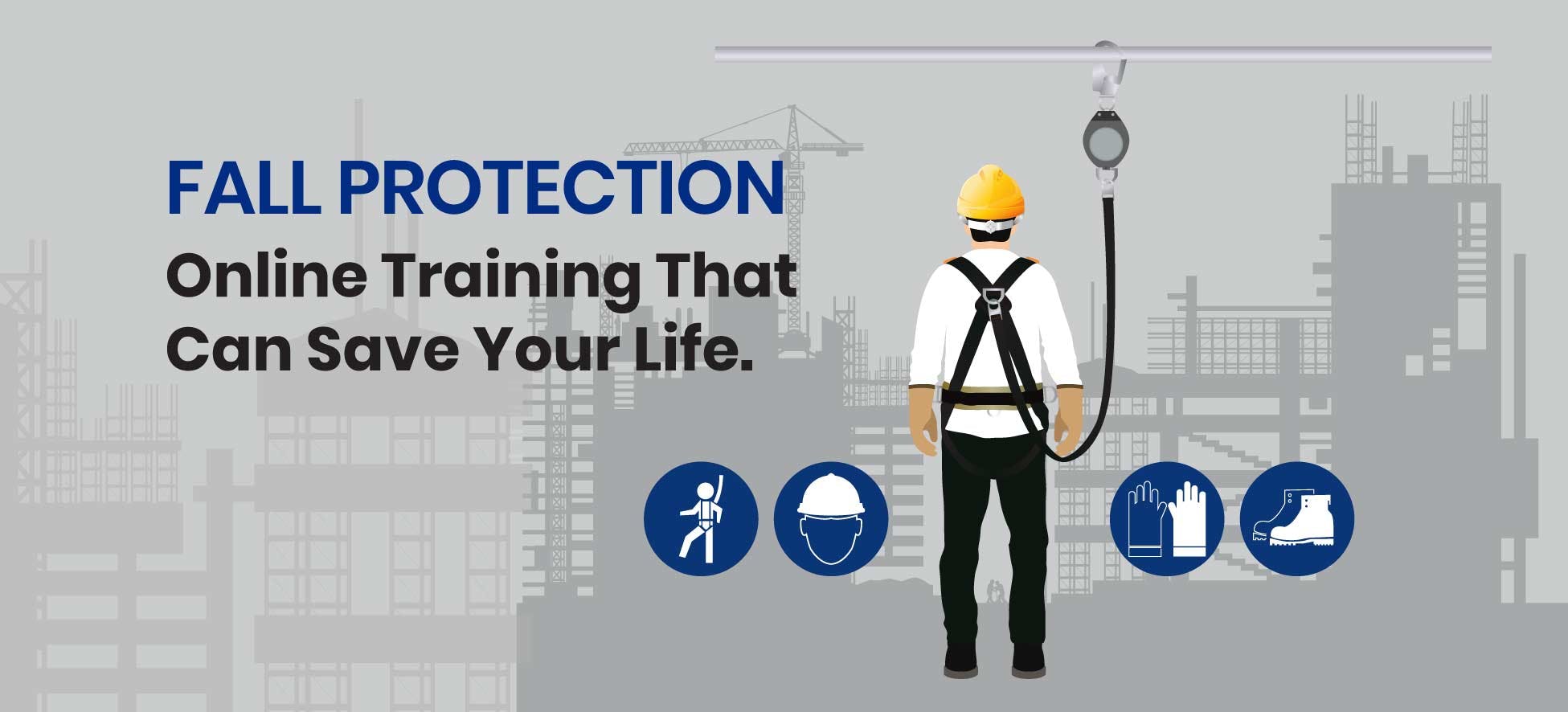The construction industry plays an enormous role in any country’s stable economic growth. Per a survey, it employs over 7.6 million employees and creates nearly $1.4 trillion of structures each year. However, employment in this industry comes at a price, such as the risks of working at hazardous sites, operating heavy machinery, falls, and life-threatening injuries. Amongst these, falls contribute the most to the rising mortality ratio in the construction industry, with an estimated 255 deaths in 2011 rising to 370 fatalities in 2016.
Falls are commonly caused by damaged or missing guardrails, improper personal fall kit, unguarded roof corners, and unstable or weak structures which fail to bear weight. Therefore, to reduce the rate of falls and fall injuries, OSHA introduced fall protection standards and mandatory criteria for every employer and employee.
CRITERIA TO IMPLY FALL PROTECTION:
Fall protection by OSHA deals with identifying and eliminating fall hazards, implementing protection systems according to the situation, inspecting these systems, and training the employees adequately.
Sub-part M is a section of OSHA fall protection standards that states that fall protection is necessary when workers work at 6 feet or less or when using hazardous equipment. OSHA FALL PROTECTION: COURSE ONLINE:
OSHA wants its fall protection standards to be accessible to all employers who decide to join or switch to the construction industry. To attain this, OSHA has introduced its one-hour fall protection course online. The course is affordable and adequately informative for beginners in the industry and mandatory for all employees to provide.
The course comprises six modules, namely,
Module 1: Introduction,
Module 2: Safety options,
Module 3: Anchors,
Module 4: Scaffoldings,
Module 5: Job tasks,
Module 6: Conclusion.

Module 1: Introduction.
The introduction emphasizes on the need for a fall protection system in the construction industry. Workplace injuries can also cost a fortune to the employer; for example, in 2017, there were approximately 5,780 resolved claims which cost around $ 23 570.
The rising statistics of fall injuries and fatalities from ladders have led to OSHA’s “Ladder inspection form” for employees. If the ladder is found defective, it should be labelled “Dangerous, Do not use” and fixed immediately.
Module 2: Safety Options.
Module 2 comprises multiple options to prevent fall injuries:
1- Guardrails: guardrail systems are created as barriers to prevent falls. The parts include the top rail, mid rail, and intermediate vertical structure. An employer must meet the following requirements before installing a guardrail system:
- The height of the top rails shall be 42 inches, plus or minus 3 inches, above the working or walking level.
- Screens, mid rails, mesh, and intermediate vertical members must be present between the top corner of the guardrail system and the pedestrian area.
2- Positioning devices: These are required when the worker has to use both hands.
They bear the bodyweight and stop a freefall within 2 ft. It consists of three parts, i.e., anchorage, connectors, and body support. Positioning devices must be fastened to an anchoring device that can hold at least 3000 pounds. Installing the anchorage directly above the worksite will prevent “swing fall”.
3- Fall-restraint and fall-arrest systems:
Fall restraint systems protect workers from hazardous edges and include a lanyard, connectors, and a body belt. The anchorage must be installed by a qualified person and bear twice the potential impact of a worker’s fall. Whereas fall arrest systems, as the name suggests, minimize the impact of the fall after it has occurred. It consists of a lanyard, lifeline, and deceleration device.
Module 3: Anchors.
Anchors are devices that a worker attaches to a weight-bearing structure to prevent falls. Common types of anchors include
|
Engineered clamps |
Strap anchors |
Concrete Anchors. |
Additional anchors. |
|
I-beam clamp |
Cable anchorage sling |
With D-ring |
Welded D-ring anchor |
|
Trolley beam anchor |
Drop-through cable |
Expanding concrete anchor |
Weld-on anchor post |
|
Standing seam metal roof anchor |
Strap anchor (not for sharp edges) |
Bolt-on wall anchor |
Trench box guardrail anchor |
Module 4: Scaffoldings.
Scaffolding is an elevated plat for supervisor's signature ruction site and allows multiple workers to function together. Scaffolding mishaps can lead to severe injuries and deaths if it is not installed following OSHA’s instructions, qualified individuals, and quality pieces of equipment. Two basic types of scaffolds include
- Supported scaffolds: platforms supported via brackets, poles, post frames, etc.
- Suspension scaffolds: platforms suspended via non-rigid support such as ropes.
Qualified individuals must train employees to identify scaffold hazards and how to disassemble, repair, move or operate each type of scaffold.
Module 5: Job tasks.
This module describes different job tasks and effective methods to reduce injuries during these tasks in order of preference:
- Framers: they lay down the foundation of a structure by framing walls, floors, etc. To prevent falls, employers have to smartly think about how much work can be done on the ground and then lifted via scaffolds, using exterior scaffolds, building it off-site, and installing it via cranes.
- Truss is a structure of interconnected triangles behaving as one entity. It is commonly used for roofs as it takes up less wood than traditional rafter-style roofs. It can be easily installed safely by using carpenter bracket scaffolding which includes a 12-inch-wide fabricated scaffold plank with the top bracket attached to the inside of exterior walls.
Guardrails are a must if the scaffold is 10 ft above the ground.
Module 6: Conclusion.
At the end of the training course, the employer must analyze whether the worker is competent enough to qualify. If not, then they must restrain the employee. If yes, the supervisor has to give a written certificate to the employer with accurate details such as the employee's name, identity, date of course completion, and supervisor's signature.
OSHA ensures that training employees adequately and implementing fall protection standards will show a marked reduction in fall-associated injuries and deaths and will create a safer working environment.



